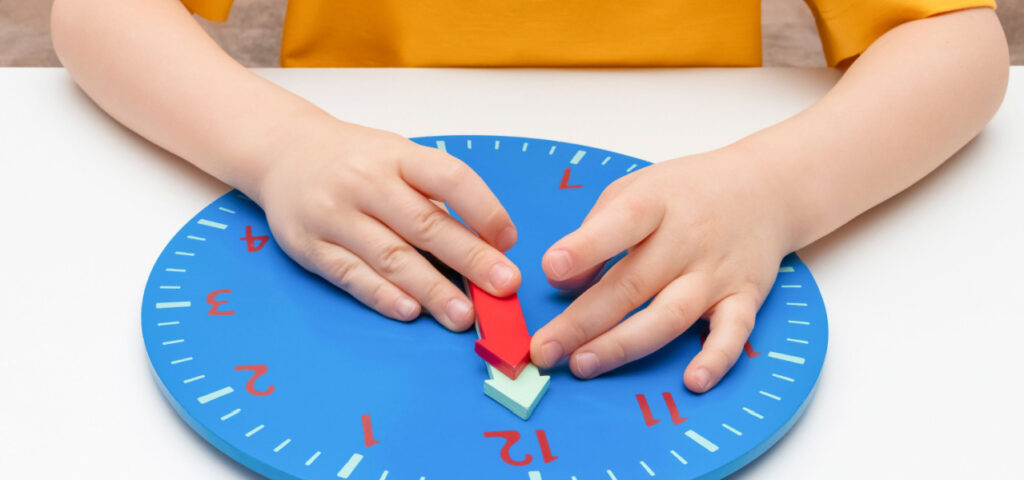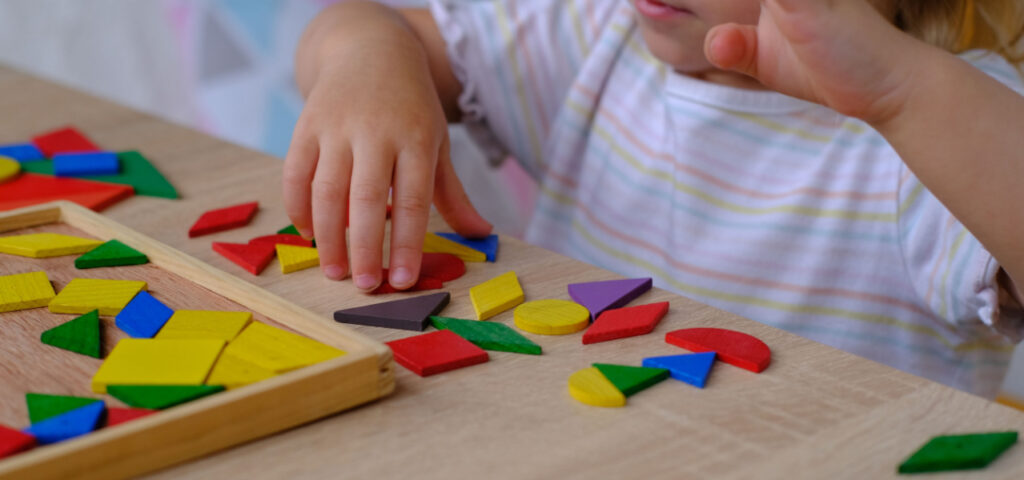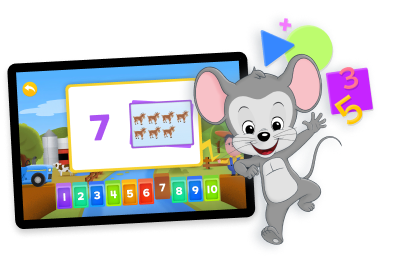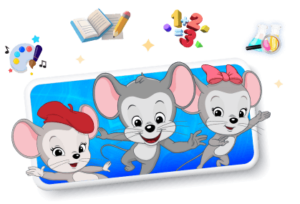
What Is Tactile Learning?
Learn about this hands-on approach to learning and how you can add it to your homeschool.
Tactile learning involves learning through touch, hands-on activities, and movement. It’s a valuable way for children to engage with the material they’re learning, alongside auditory, visual, and reading and writing methods.
Incorporating tactile learning into every day life provides kids with an additional way to connect with new ideas, making learning experiences more interactive and dynamic.
Let’s explore the key elements of tactile learning and how you can easily integrate this approach into everyday educational activities, whether at home, in the classroom, or during playtime.
Tip: ABCmouse offers a variety of learning pathways, providing children with engaging, supplemental activities that complement their educational journey and reinforce key skills.
What is Tactile Learning?
In tactile learning, also known as kinesthetic learning, students learn through hands-on, physical activities. Tactile learning is often described as a multi-sensory learning because a child first hears or sees new material and then furthers their comprehension by exploring the material with their hands and through movement. Because it uses the sense of touch, tactile learning is thought to be more engaging and more likely to help children retain information.

Tactile learning is also helpful for developing problem-solving strategies, as students are encouraged to think creatively when they encounter challenges with hands-on activities and rely on their own instincts to find solutions.
Tactile learning typically introduces new concepts with activities and exploring or creating things by hand, which means manipulatives and hands-on projects are a major part of this learning approach. Tactile learning is active learning, meaning children engage with a lesson with their whole body. They’re encouraged to move and interact with their surroundings and their learning materials.
Add Tactile Learning to Every Day Learning
Tactile learning typically introduces new concepts with activities and exploring or creating things by hand, which means manipulatives and hands-on projects are a major part of this learning approach. Tactile learning is active learning, meaning children engage with a lesson with their whole body. They’re encouraged to move and interact with their surroundings and their learning materials.
Engage Your Child’s Hands
Look for ways to involve your child’s hands and their sense of touch in learning. You can do this in large and small ways. For example, when explaining new topics, encourage your child to take notes or highlight text as you read through material together. During read-aloud stories, invite your child to draw out what they’re hearing, build with clay, string beads, or knit.

You can also use manipulatives, which are concrete objects that allow students to explore an idea with their hands. Manipulatives can include any object from your home, such as blocks or beads, marbles, fabric scraps, or cotton balls. Manipulatives are often used to teach addition or subtraction and other math concepts.
Use Hands-on Projects
Hands-on projects and activities are an important part of tactile learning as it allows children to explore concepts themselves. Try including learning that involve making or doing things by hand, such as build-it-yourself kits, science experiments, gathering and sorting objects, art projects, and playing with board games.
Add Movement and Physical Activity
Tactile learning is tied to kinesthetic learning, which involves learning through movement. Add movement into learning by providing yoga or stretching breaks, exploring a topic through an activity, and or even just moving to a new learning environment. You can also bring learning into daily walks and outdoor exploration or by enjoying field trips.
Examples of Tactile Learning Activities
- If you’re learning about rocks, try going outside to look for different kinds! Have your child feel the rocks and notice how they look and feel different. Talk about why some are smooth and some are rough, or why they have different colors.
- Making a diorama is another fun way to learn with your hands! You can build a little world that shows where animals live, famous places, or even a scene from your child’s favorite story. It’s a great way to make learning exciting and hands-on!

- When learning about fractions, cut paper into halves, quarters, and eighths. You can even do some baking and talk about how fractions are used when measuring ingredients.
- When learning letter shapes and sounds, let your child make the letters with finger paint, or use sand or dirt to shape the letters with their hands.
- Look for picture books that have different textures in the illustrations so your child can feel as they read.
- Try using writing tools that feel different, like smooth gel pens, dusty chalk, freshly-sharpened pencils, or felt-tip markers, to make writing more fun and exciting!
How ABCmouse Can Support Tactile Learning
ABCmouse presents information in a variety of ways, offering multiple opportunities for children to engage and connect with the material. The tactile aspect of learning is encouraged through our offline, hands-on activities that can be integrated into your child’s learning routine, such as our free printables and extensive lists of educational activities and crafts.
Online Learning Tools
ABCmouse covers a wide range of subjects, including science, social studies, reading, math, art, and music. ABCmouse provides interactive games, puzzles, and printables, which can complement these hands-on activities, making learning more engaging.
Check Out ABCmouse ➜

Support Your Homeschool with ABCmouse and Adventure Academy
Our digital learning programs are designed by curriculum experts to assist your homeschool and children ages 2 through 13. ABCmouse is a comprehensive online educational platform for children ages 2-8, while Adventure Academy focuses on children ages 8-13. Both programs provide access to lessons on reading, language arts, math, sciences, social studies, and more. Learn more about how each program can enhance your homeschool below.
ABCmouse and Homeschooling
ABCmouse offers over 10,000 learning activities and more than 850 lessons for children, plus a large digital library of books and educational puzzles, songs, activities, and worksheets. The program encourages self-paced learning with motivating rewards and includes progress tracking, which allows home educators to monitor time spent on certain subjects and the number of activities completed.

Then just $14.99/mo. until canceled
As a paid add-on to regular subscriptions, home educators can access the Assessment Center, which allows parents and caregivers to test children on their knowledge, determine successes and struggles, and receive recommended lessons based on assessments.
ABCmouse provides a robust curriculum that can supplement other early learning lessons. It’s trusted resource that’s been downloaded over 10 million times and has a 4.5-star average out of 831.4K ratings.
Adventure Academy and Homeschooling
Adventure Academy combines an interactive world with a curriculum covering reading, language arts, math, science, and social studies. With quests, games, and educational videos and activities, learning becomes an epic journey that motivates kids to explore various topics.
For homeschooling families, Adventure Academy offers an engaging, flexible learning experience that can supplement other educational materials. The program features thousands of activities created by curriculum experts and covers all major academic domains.
Parents and caregivers can choose academic difficulty levels and track each child’s progress, seeing time spent in Adventure Academy, activities completed, and subjects studied.
Adventure Academy emphasizes key topics such as reading comprehension, vocabulary development, mathematical operations, fractions, world geography, American history, physical science, life science, earth science, and scientific inquiry.
For more information, visit AdventureAcademy.com.
More from ABCmouse:
-
A Parent’s Guide to Play Based Learning
Discover the joys of play-based learning with our Parent’s Guide. Learn how it benefits language, social skills, and creativity in children from infancy to elementary. Engage…
-
2nd Grade Spelling Words
Discover engaging activities for second-grade spelling practice with our extensive lists, including vowel teams, r-controlled vowels, prefixes, and more. Free printables included for easy learning at…
-
What is Phonics, and How Do I Teach It? A Guide for Parents
This guide from ABCmouse was written using insights from our educational experts to help parents and caregivers understand what phonics is, the important role it has…
-
1st Grade Spelling Words
Explore effective strategies for teaching first grade spelling with our comprehensive guide. With many free printable list of essential 1st grade spelling words your first grader…
-
How To Prepare Your Child for Kindergarten
Prepare your child for kindergarten with ABCmouse’s checklist guide: Establish routines, enhance social skills, foster academic prep, and ensure emotional readiness for school. Learn more about…







